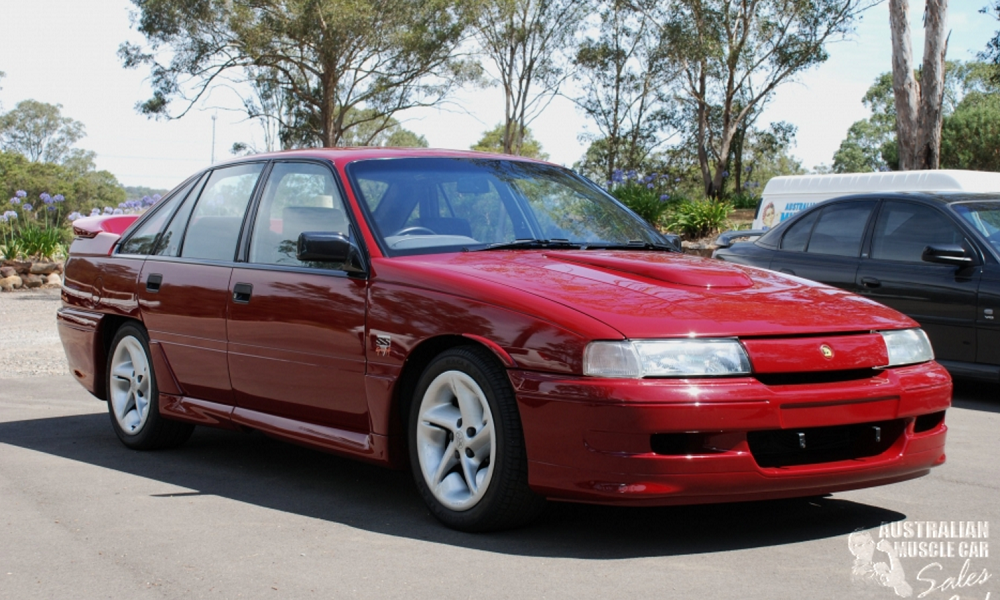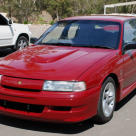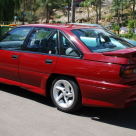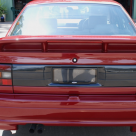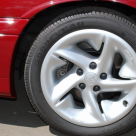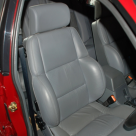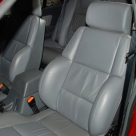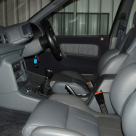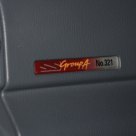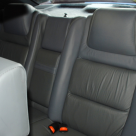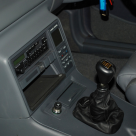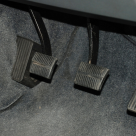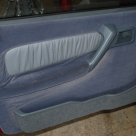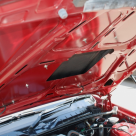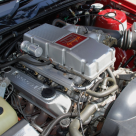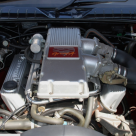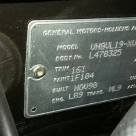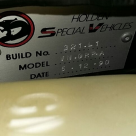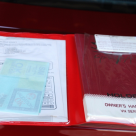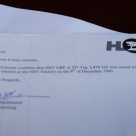1990 Holden (HSV) VN SS Group A SV
Specifications
Vehicle location
Australia , South Australia , Adelaide
This was the very last of the Group A Holdens, and one of only 302 units built in total. At the time these cars were produced, Group A regulations applied to the Australian Touring Car Championship ('ATCC') and many other championships around the world. The Group A rules required a manufacturer to build a minimum of 500 vehicles of a specific 'evolution', such as a modified body kit, brakes or engine. This then allowed that manufacturer to enter the Group A series with vehicles containing those evolution features. This was precisely the reason Holden produced the VN SS Group A, and despite only building 302 units, the Confederation of Australian Motorsport ('CAMS') granted Holden an exemption, allowing them to compete in the 1991 and 1992 Group A championships. As far as road-going cars go, Group A homologation cars are among our favourites, as they represent the closest factory-backed link to the cars that we recognise from the racetrack. This thoroughbred link is an important factor for collector cars of this type, and something that provides a level of investment certainty, assisted by the associated low production numbers.
This car (build number 321) is currently offered through Australian Muscle Cars, asking $95,000 (AUD). As this car is numbered 321, you might question whether there were only 302 built. We have since confirmed that these cars were allocated numbers within the range of 1 - 500, and were not numbered consecutively. Therefore, you'll sometimes see cars with a number higher than 302. The price is certainly not the lowest we've seen on a Group A VN in the last 12 months, but given the vehicle's condition and position as a collector car, numbers in this range are not outrageous. It has less than 10,000km on the clock, has its original set of tyres, immaculate factory 'Durif Red' paint, and is reportedly one of only 10 of these cars fitted with a leather interior by the HSV factory. If you wanted to add this to your static collection, this would be the car to get, representing an almost untouched example. The downside is that if you wanted to drive it (which you would), you would feel guilty about adding additional mileage and wearing out that original rubber every time you took it out.
Holden and HSV had worked hard on developing this car as a basis for its Group A racing efforts, and as a serious competitor to the likes of the R32 Skyline GTR, Ford Sierra RS500 and the BMW E30 M3, which had dominated the ATCC in preceding years. The previous generation Group A VL Commodores had performed very well, and particularly so during the separate endurance events, but more was needed to get Holden back on top against these high-tech European and Japanese competitors. The VN Group A was meant to be Holden's answer, and coincided with the birth of the HSV brand, and the return of Peter Brock to a Holden team for the first time since 1987.
 Originally retailing at $68,950 (AUD), the VN Group A was based on the Holden Berlina, and was only available in 'Durif Red', with exceptions being two 'Tooheys' promotional vehicles which were painted black over their original colour. From the factory, they were fitted with 17" x 8" alloy wheels with Goodyear rubber, and the interior boasted radio/cassette, airconditioning, central locking, power windows, an alarm, and was finished off with a unique four-spoke steering wheel. The cars were also individually numbered, with a small plaque above the glovebox. Many of these features were considered premium at the time, and make for a relatively comfortable ride even by today's standards.
Originally retailing at $68,950 (AUD), the VN Group A was based on the Holden Berlina, and was only available in 'Durif Red', with exceptions being two 'Tooheys' promotional vehicles which were painted black over their original colour. From the factory, they were fitted with 17" x 8" alloy wheels with Goodyear rubber, and the interior boasted radio/cassette, airconditioning, central locking, power windows, an alarm, and was finished off with a unique four-spoke steering wheel. The cars were also individually numbered, with a small plaque above the glovebox. Many of these features were considered premium at the time, and make for a relatively comfortable ride even by today's standards.
Mechanically, the cars were fitted with a reworked version of Holden’s 4.9-litre V8. The engine block was cast for additional strength, and modified cylinder heads, roller rockers and high-flow fuel injection was applied. Output was 215kW at 5200rpm, with 411Nm of torque at 4000rpm. By today's standards this may not seem like much, but in 1990, these figures were very impressive. The engine was connected to a 6-speed ZF gearbox - the same as that applied to the Corvette ZR-1, with a heavy duty racing clutch and limited-slip differential. To help it slow down, it was fitted with 327mm x 28mm ventilated front discs with heavy duty twin-piston callipers, also borrowed from the Corvette ZR-1, and the rear brakes were 278mm x 20mm ventilated discs. Those features on the road-going car allowed Holden to give its Group A race equivalents plenty of potential on the track, and the package had a clear focus on durability for the endurance rounds like Bathurst, which at the time was an event held outside of the ATCC's official calendar.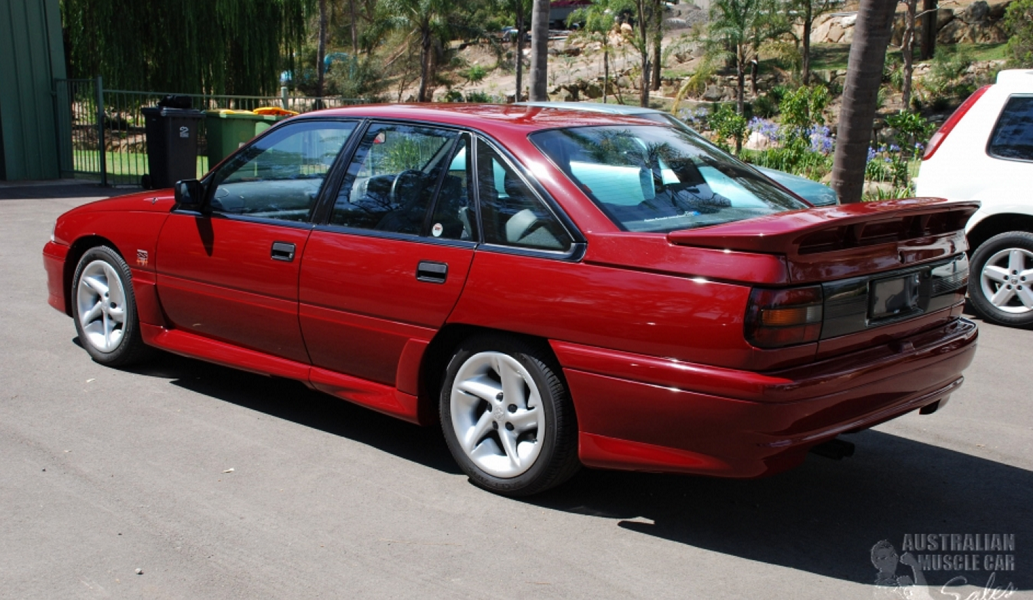
In terms of the VNs' achievements in motorsport, the resume is not quite as spectacular when compared to some of its earlier counterparts. However, it should be noted that the nature of the competition at the time the VN entered service was the most advanced in the world. Had the VN competed in a more endurance-focussed championship, perhaps the story here would be very different. Unfortunately for the Commodore, weight and tyre issues hampered the VNs' performance in the early stages of the 1991 season, and the well-established and lighter competitors were able to take advantage of the larger number of sprint-oriented tracks throughout the series, whilst also performing well through the few endurance rounds. The VN did become increasingly competitive throughout the 1991 and 1992 seasons, with Peter Brock often achieving strong qualifying performances throughout the seasons, but it was not until heat 1 at Amaroo Park in 1992 that the VN finally took a victory, with Brock at the wheel.
Despite not achieving as many victories as Holden desired on the track, the VN Group A represents something very special. It's the last car produced by Holden in the international Group A format, before the Australian championship moved to the new Group 3A format from 1993. Although some aspects of the Group A format were retained in the new 3A format, the strict Group A rules with respect to street-going 'relatives' meant we would not see the likes of Group A road-going cars in subsequent generations. Some have gone as far as saying that the VN is the last true muscle car Holden built, but we're sure there are plenty that would disagree with that statement, and there are many examples of brilliant cars that came years after. Either way, this car certainly represents a milestone in Australian motorsport history, being the last, and one of the rarest of Australia's home-grown Group A cars, and we expect to see values continue to climb to these levels and higher in the near future.
If you have one, please contact us, as we would love to get it on our register and share its history with other enthusiasts. Follow us on Facebook for more stories like this.
You are about to contact the author of this vehicle.
Be aware this vehicle has currently not been listed for sale!
So refrain from price bidding.
